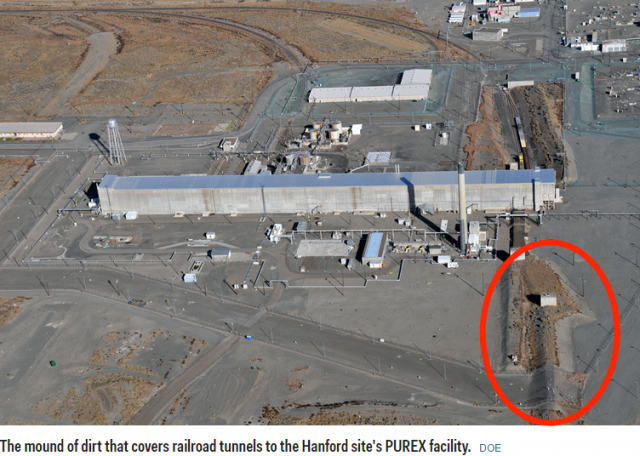
CBS News at around 1:00 p.m. Tuesday (US Eastern Daylight Time, or 1:00 a.m. Wednesday PH time) broke the news that an emergency was declared at the Hanford Nuclear Reservation in southeastern Washington “after a portion of a tunnel that contains rail cars full of nuclear waste collapsed.”
The alert was activated shortly “before 8:30 a.m. at the Hanford Emergency Operations Center,” according to the U.S. Department of Energy (DOE).
CBS News added, “the accident occurred at a facility known as PUREX [for Plutonium Uranium Extraction], located in the middle of the sprawling Hanford site, which is half the size of Rhode Island. The closed PUREX plant was part of the nation’s nuclear weapons production complex.”
The site has been described in media reports as the most contaminated nuclear site in the United States.
The initial dispatch cited authorities saying “the collapse took place within one of two rail tunnels under the PUREX site, which contains contaminated materials. One tunnel is about 360 feet long, and the other is approximately 1,700 feet long. The partial collapse took place in an area where the two tunnels join together.
“According to the DOE, soil has subsided in an area that spans about 20 feet by 20 feet. The discovery was made during routine surveillance of the area,” CBS News said.
“No workers were inside the tunnel when it collapsed, but nearby crews were evacuated as a precaution. Other employees were asked to secure ventilation and shelter indoors. The entrance to the site has been restricted.”
The collapse, according to the CBS News report, may have been caused by road crews doing construction above the tunnel location. The level of concern for significant danger at the site has subsided.
“The federal government created Hanford at the height of World War II as part of a hush-hush project to build the atomic bomb. The site produced plutonium for the world’s first atomic blast and for one of two atomic bombs dropped on Japan. It continued production through the Cold War.
“Today, it is the nation’s most contaminated nuclear site, with cleanup expected to last decades. It contains about 56 million gallons of radioactive waste, most of it in 177 underground tanks.”
Workers took cover and turned off ventilation systems after minor damage was discovered in the wall of a transport tunnel, a spokeswoman for the Department of Energy said by telephone from the Hanford Joint Information Center.
The damage was more serious than initially reported, and the take-cover order was expanded to cover the entire facility after response crews found a 400-square-foot section of the decommissioned rail tunnel had collapsed, she said, declining to identify herself, citing agency policy.
The site is in southeastern Washington on the Columbia River, about 170 miles (270 km) east of Seattle. Operated by the federal government, it was established in the 1940s and manufactured plutonium that was used in the first nuclear bomb as well as other nuclear weapons. It is now being dismantled and cleaned up by the Energy Department.
“This is a potentially serious event,” said Edwin Lyman, a senior scientist at the Union of Concerned Scientists. “I can see why the site ordered emergency measures. Collapse of the earth covering the tunnels could lead to a considerable radiological release.”



